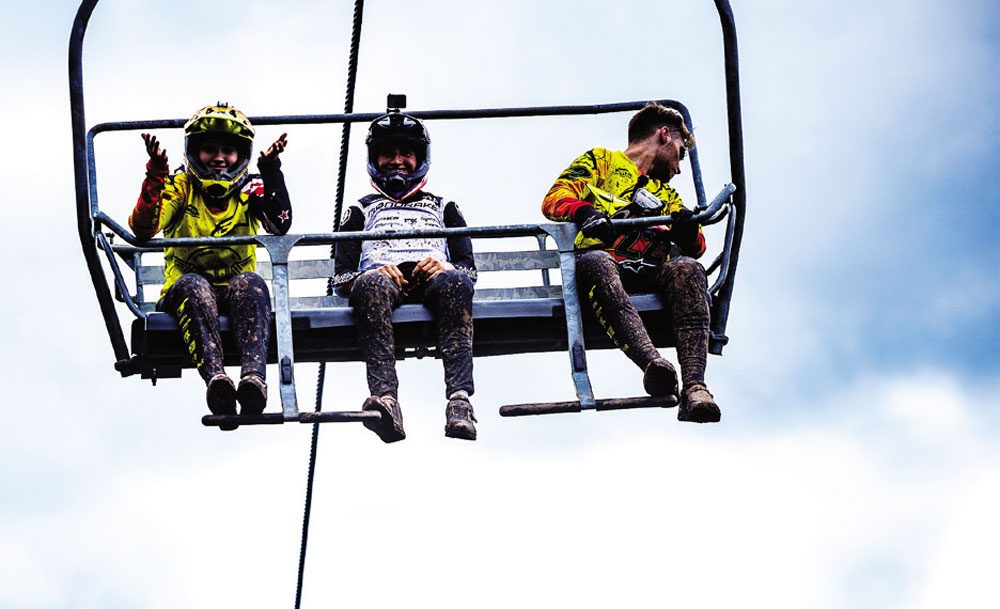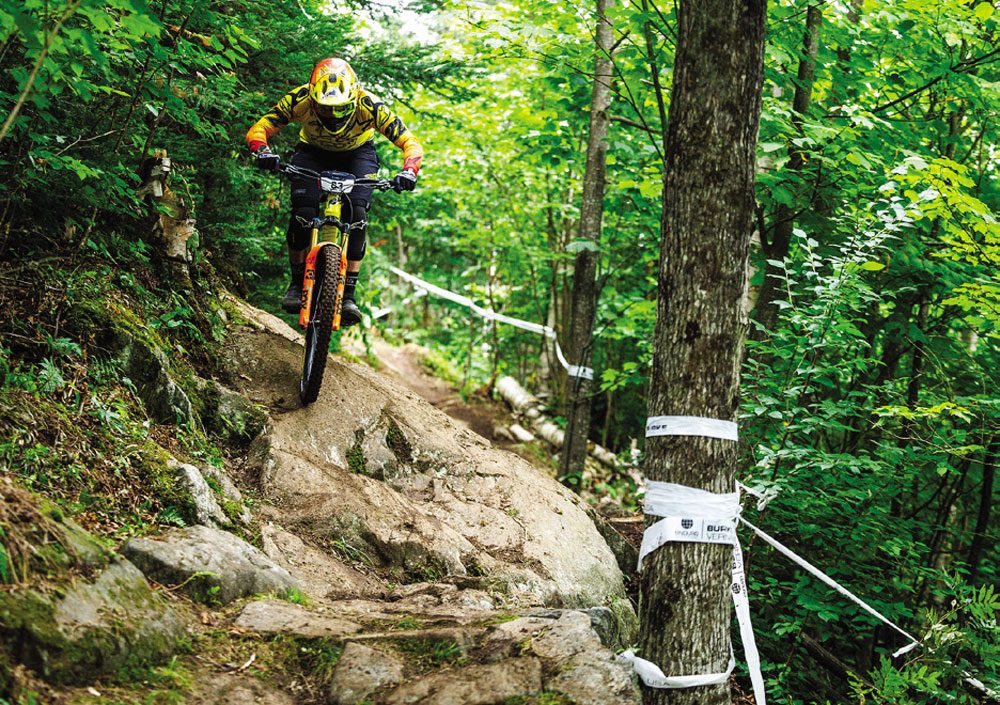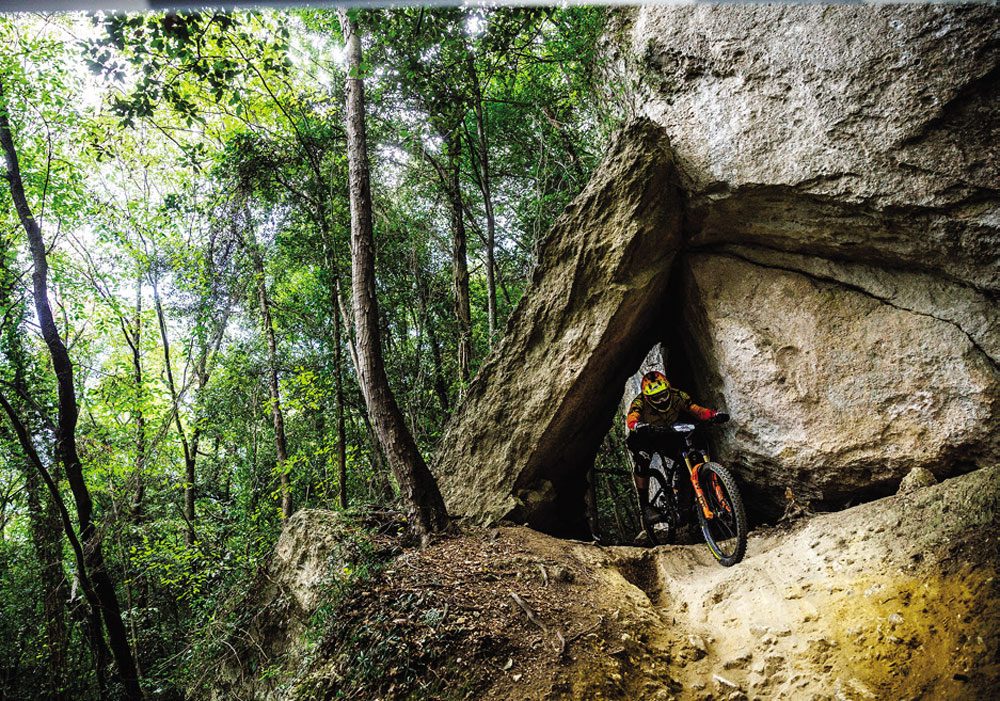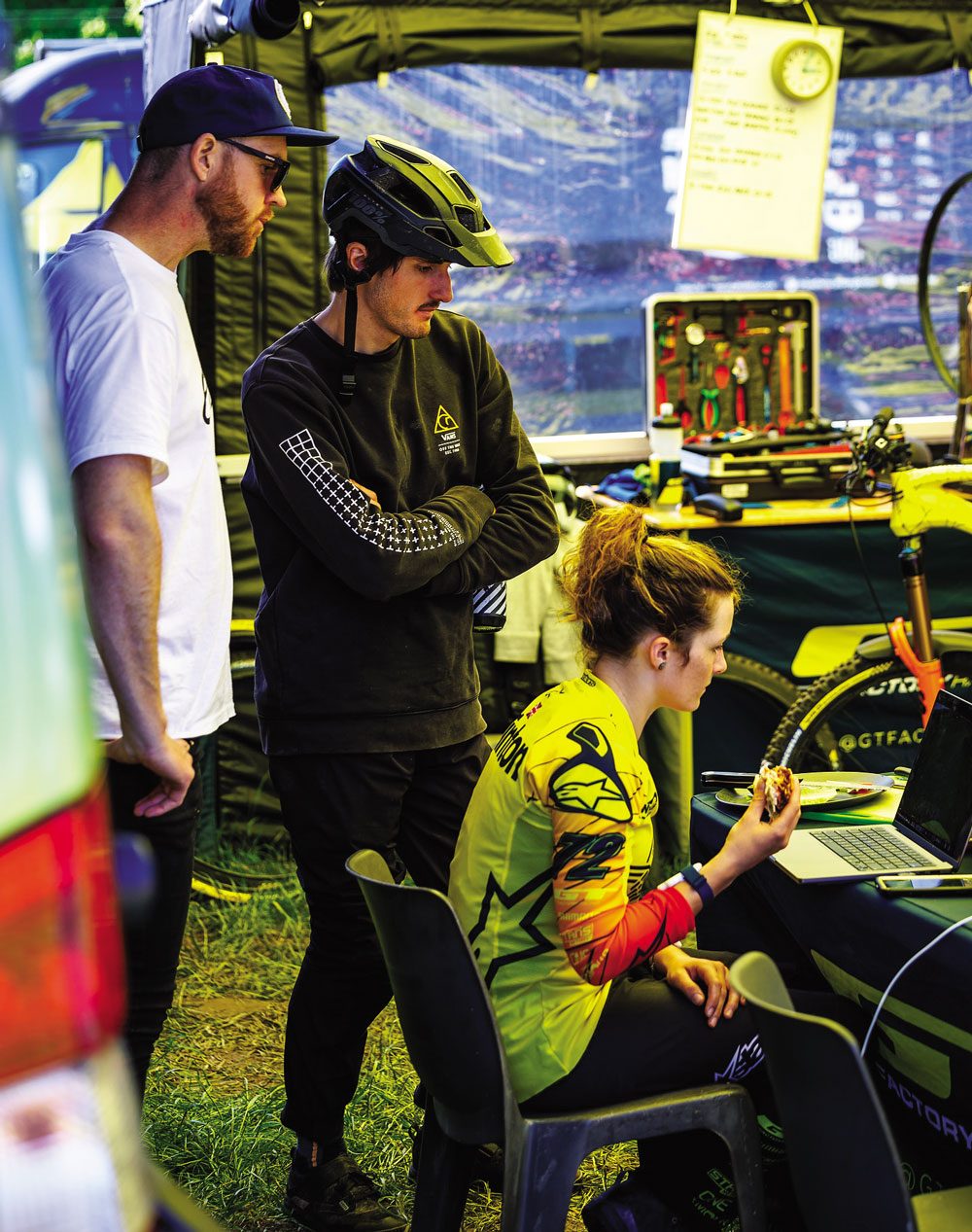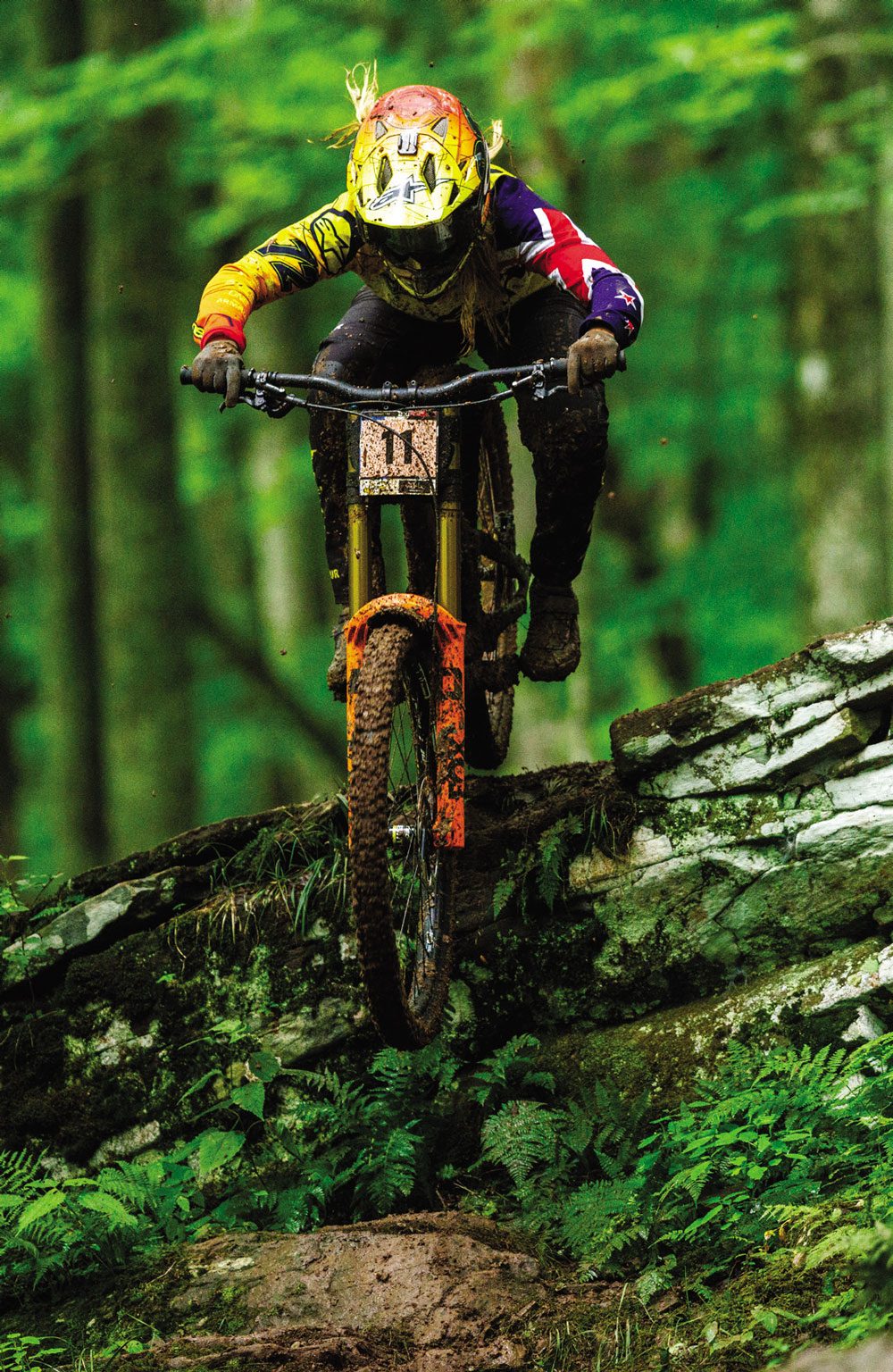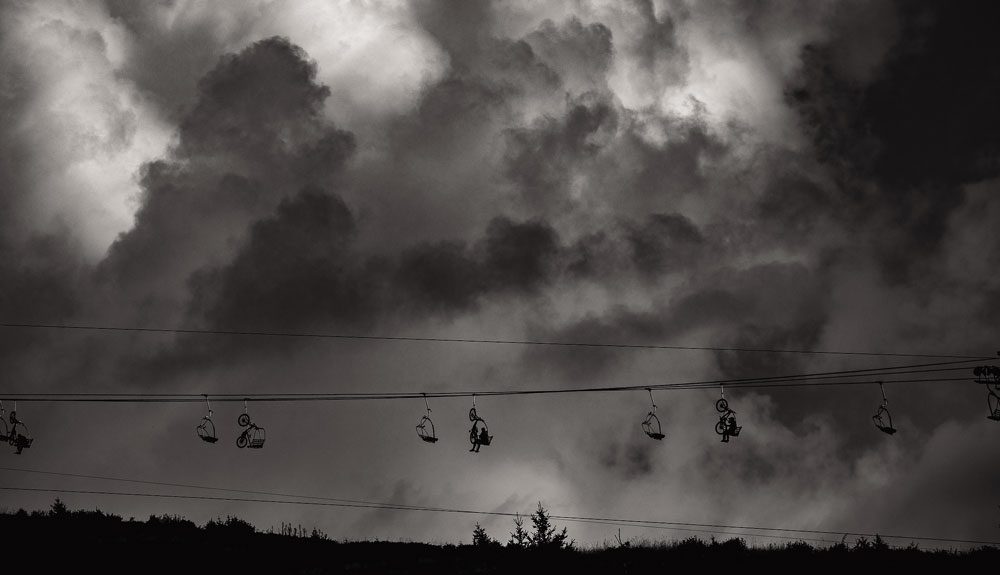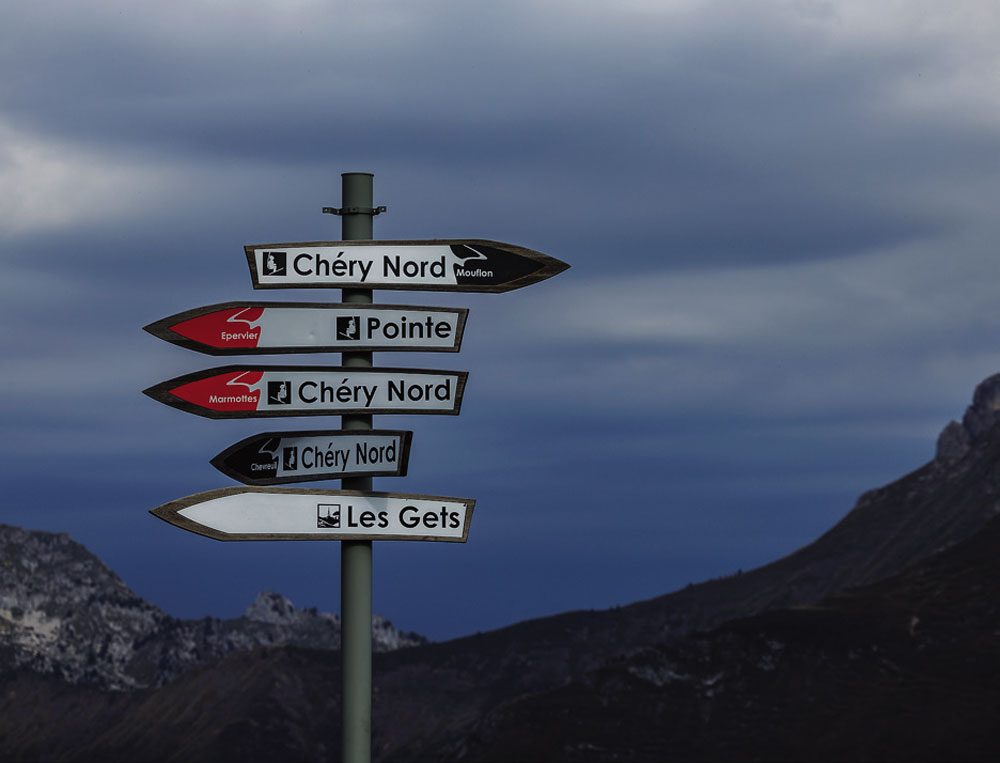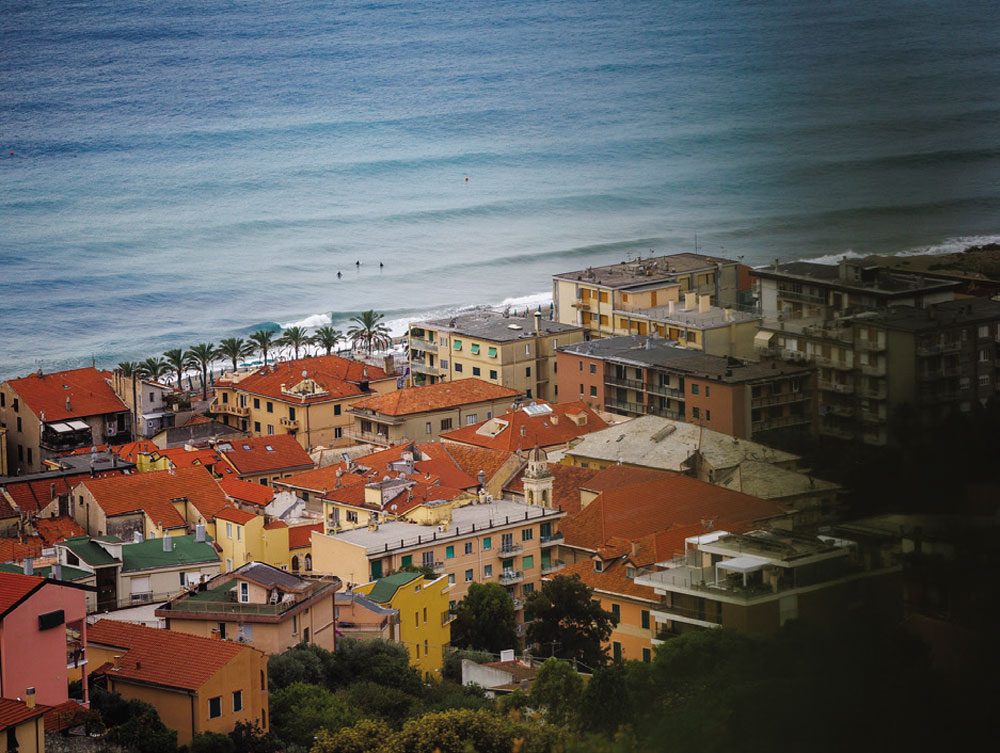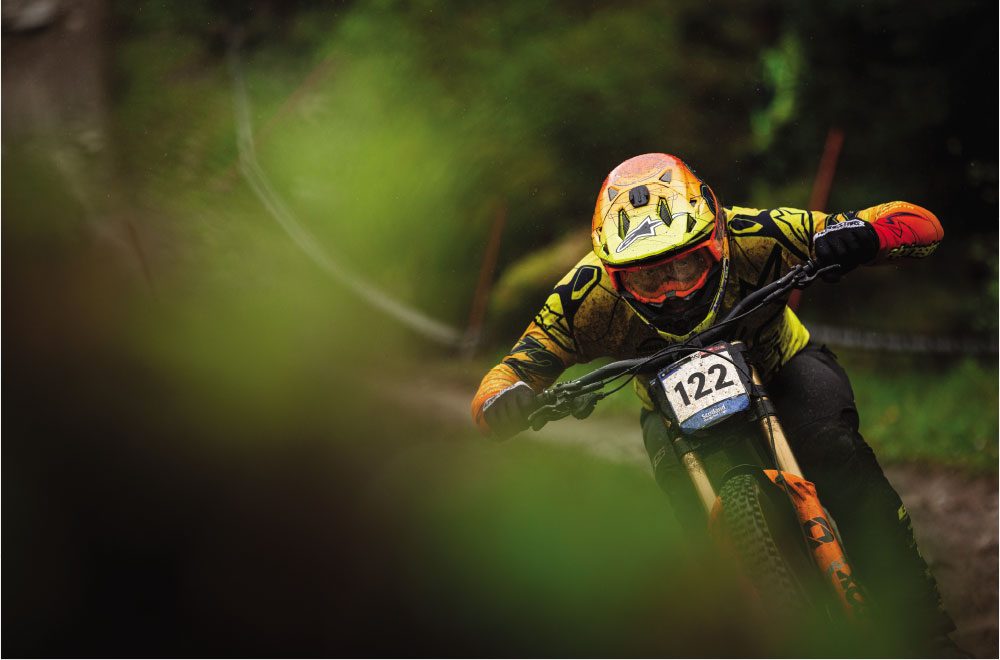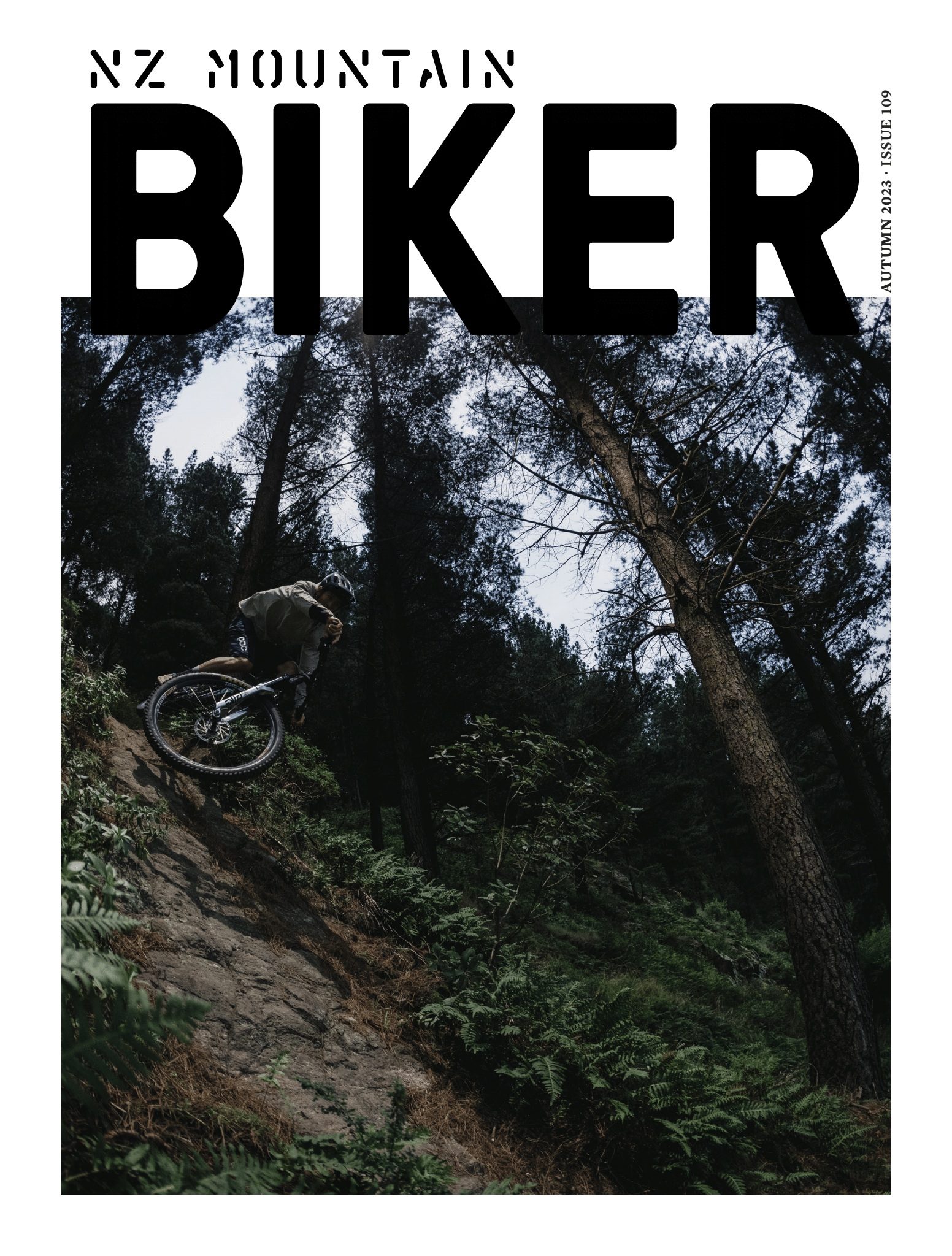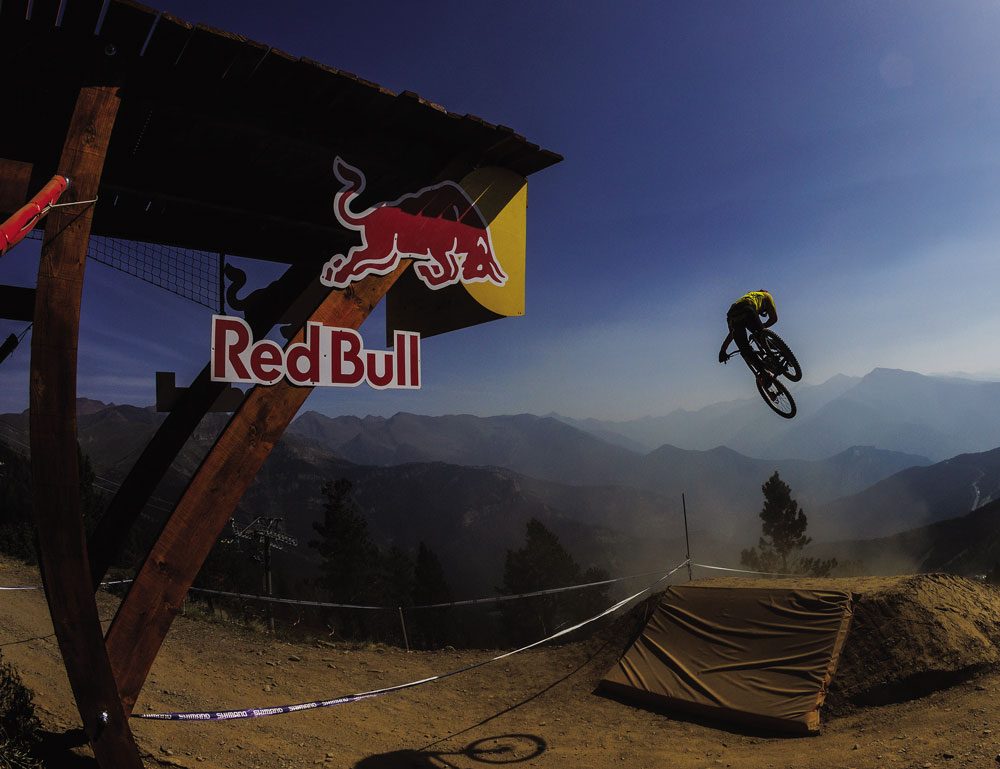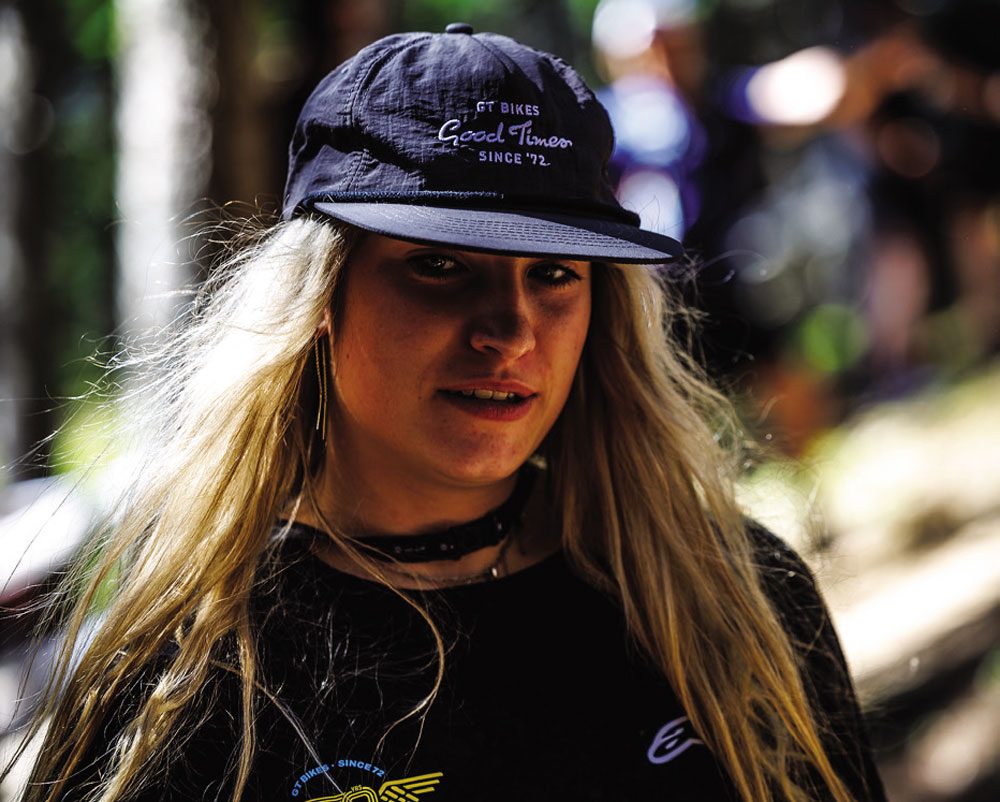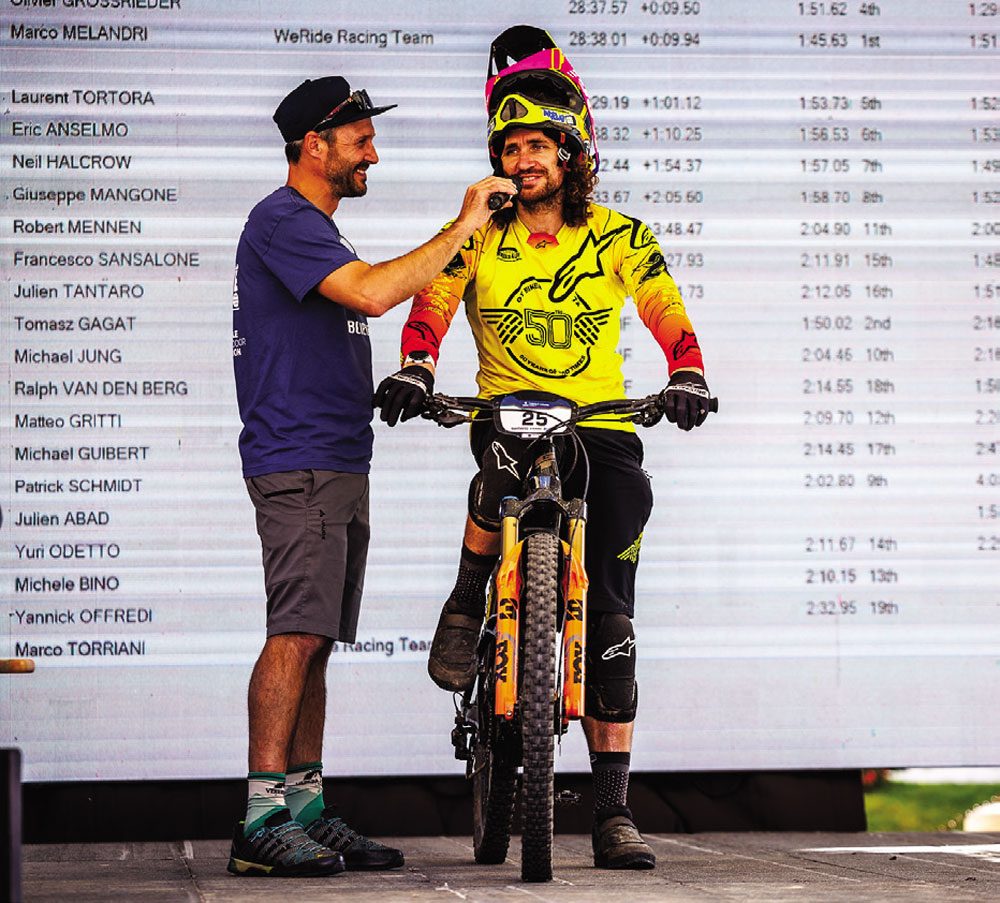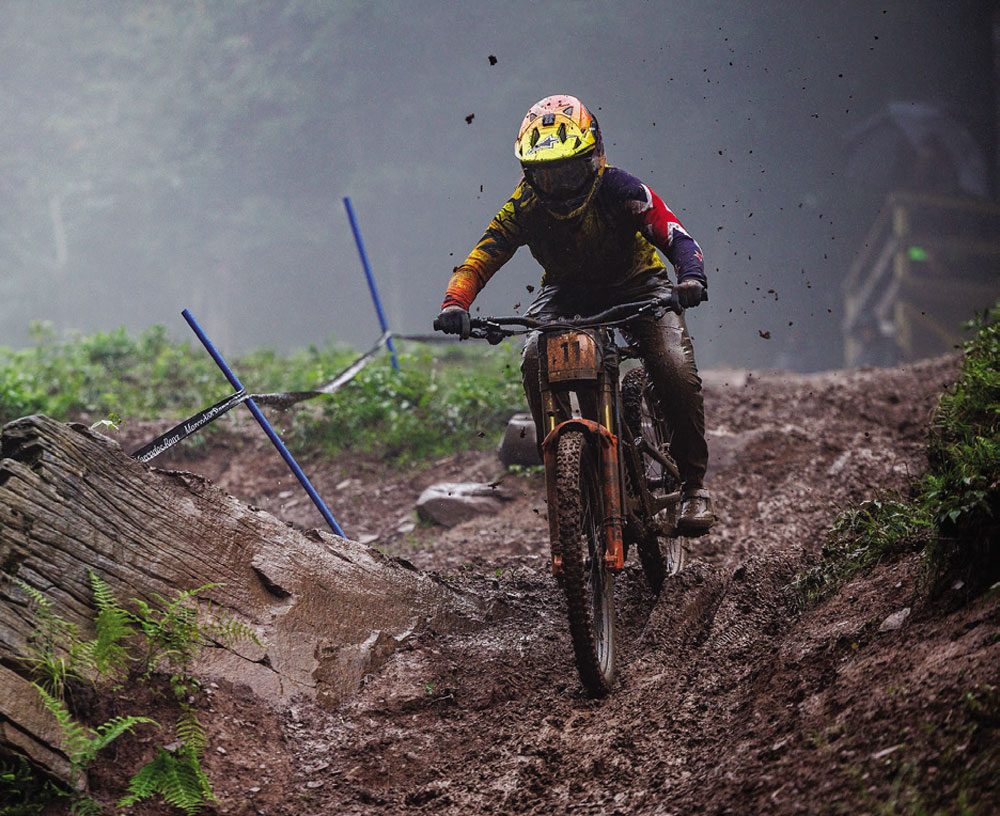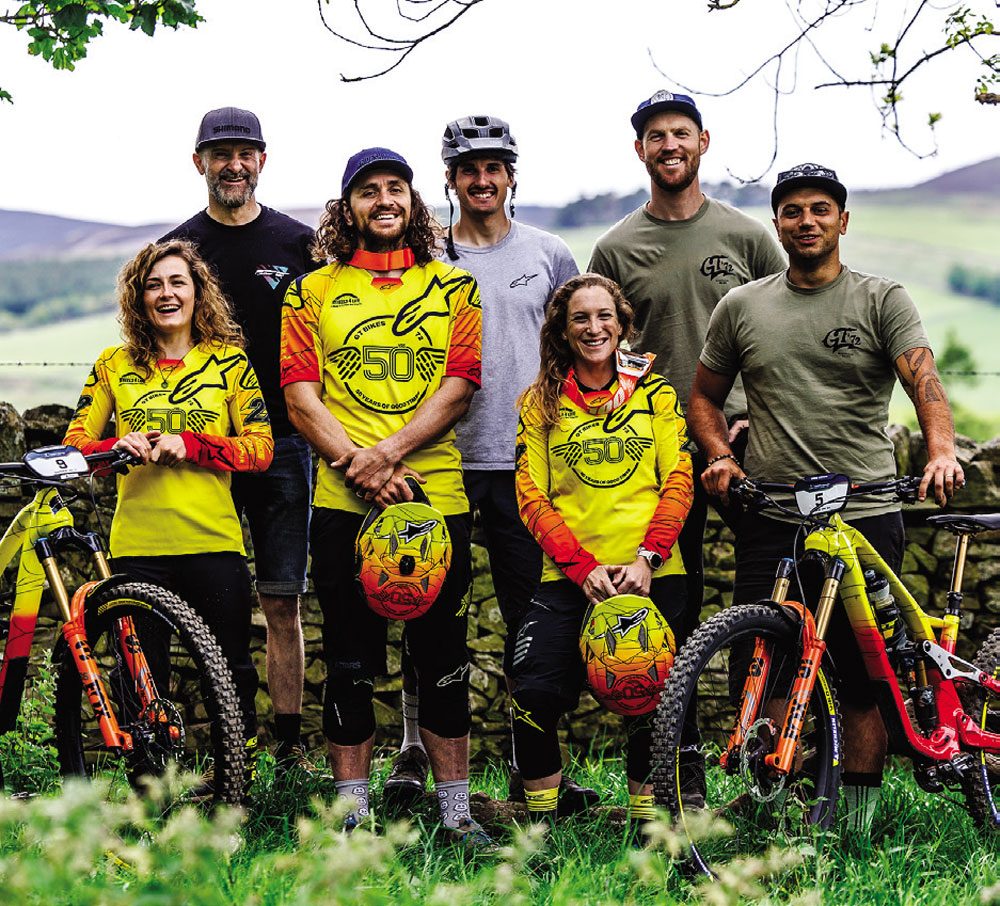Words: Cam Cole
Photography: Sven Martin
Winding the clock back, I started in the role of GT team and performance manager back in November 2021. This opportunity emerged while I was attending the 2021 UCI Mountain Bike World Champs in Val Di sole as the stand-in New Zealand team manager while our borders were still virtually closed, in the middle of the Covid pandemic.
The 2022 northern hemisphere summer has been and gone. In fact, it’s now well and truly in the rear view mirror. For me, in a diverse role supporting GT Factory Racing (GTFR), this came with thanks after many long days spent track side, pointing at riding lines scattered with rocks, roots, dust and mud; being holed up in event villages running errands, cooking meals, making coffee, setting up team pit infrastructure only to tear it down again; travel days navigating narrow Scottish roads in long, heavy team vehicles, attempting to peel tyres off rental cars, boarding ferries and flights spanning oceans, countries and continents; and of course, in classic GT Factory Racing style, our fair share of good times. After an opportune catch up with some old mates from my days as a professional rider (that’s a story I will save for later) some ideas were thrown about and a couple of months later I was signed on to the team. Soon enough, I was buried in online meetings, planning the 2022 racing season, and numerous spreadsheets as the management staff ground through all of the leg work that would allow the team to operate during the 2022 racing season.
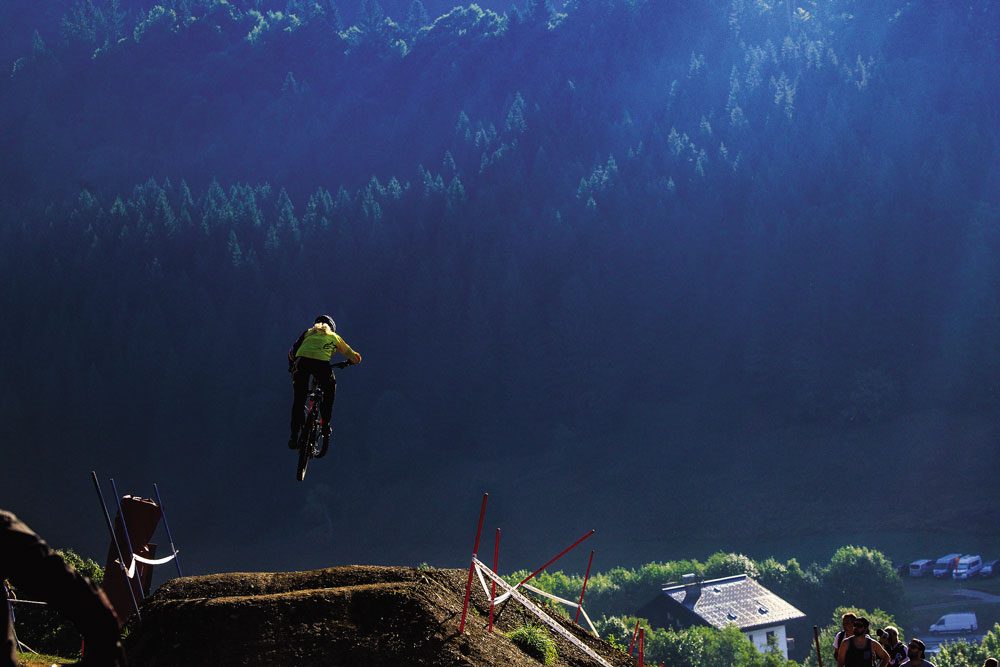
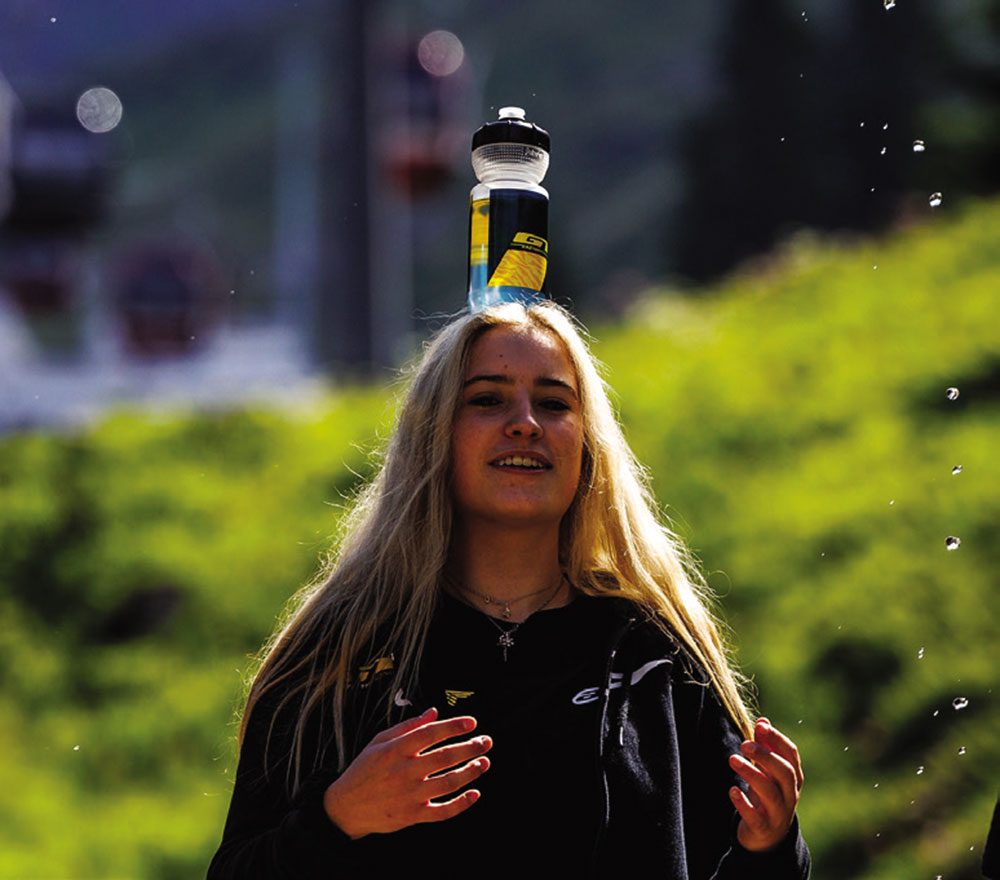
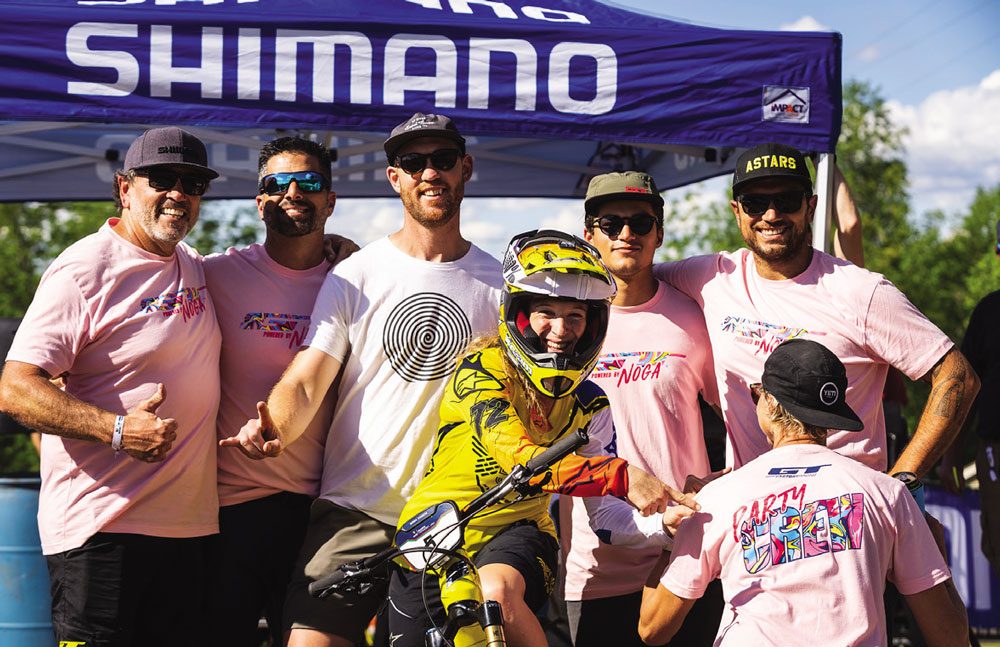
Team and Performance Manager — an ever-changing role
The role I’ve taken on with GTFR is a diverse one. It’s a role that evolves in its nature depending on the time of year. In the off season months, it looks and feels like any administrative role. Duties include event planning: from building out the team calendar for the season, booking flights and accommodation, all the way through to working closely with the chef team that supports us at the World Cups. On the performance side, I am frequently in contact with the riders so that the team is updated and aware of their off season progress and so we can keep them updated on any news coming from GT HQ or team partners. On this aspect of the role, my experience as a former professional rider is valuable in ensuring the riders are supported and that the team can assist them in their professional and athletic development. Ultimately though, the athletes on the team are highly motivated and require only guidance as we work together to refine their approach to top level international racing. On the marketing and business side there are general communications aspects of the role, to ensure info is flowing in all directions between the team, several of the GT business functions and GTFR team partners. In addition, there is budgeting and budget tracking. During the off season months, I work closely with Steve Spencer on the sports marketing side at GT HQ and Mark Maurissen, who works on the product and tech side for the team, taking care of all product ordering and allocations for the team as well as supporting the logistics planning. During the season, Mark is both a mechanic and logistics operations support. Additional staff include Rich Simpson, based in the UK, Matteo Nati, who divides his time between Italy and New Zealand, and our two French media mates, Louis and Jules. During the racing season, my job morphs into more of an operations role as the season plan rolls out week by week, race by race. The hours stack up quickly with early mornings in the pits helping the mechanics set up for the day, and generally end late with planning for the next day and site clean-up. Energy is what you need for this part of the job, especially since we are a relatively small factory team and one of only a few that compete in both the Downhill World Cup and Enduro World Series (EWS). For most of the Downhill World Cups in 2022 we were four to five staff looking after four riders, compared to the likes of Commencal Muc-off who have upwards of 10 staff for four to five riders. My days at the events are stacked with general race and team admin, such as assisting with the maintenance of team equipment and supplementary grocery shopping. On the performance side, it becomes more intensive at the events, ensuring riders have what they need to do their job well. The on-track support for the riders is a big part of it when I’m at the races. For DH that means standing track side sighting lines, coaching or suggesting racing tactics and strategies. Sometimes communicating with mechanics about bike set up is required. During the peak of the season sometimes all we can do is react. Dealing with cancelled flights (thanks Easy Jet), adjusting race plans as the inevitable injuries pop up and just generally rolling with the punches that are thrown at you daily when you are managing a dozen people traveling and racing all over the world is par for the course.
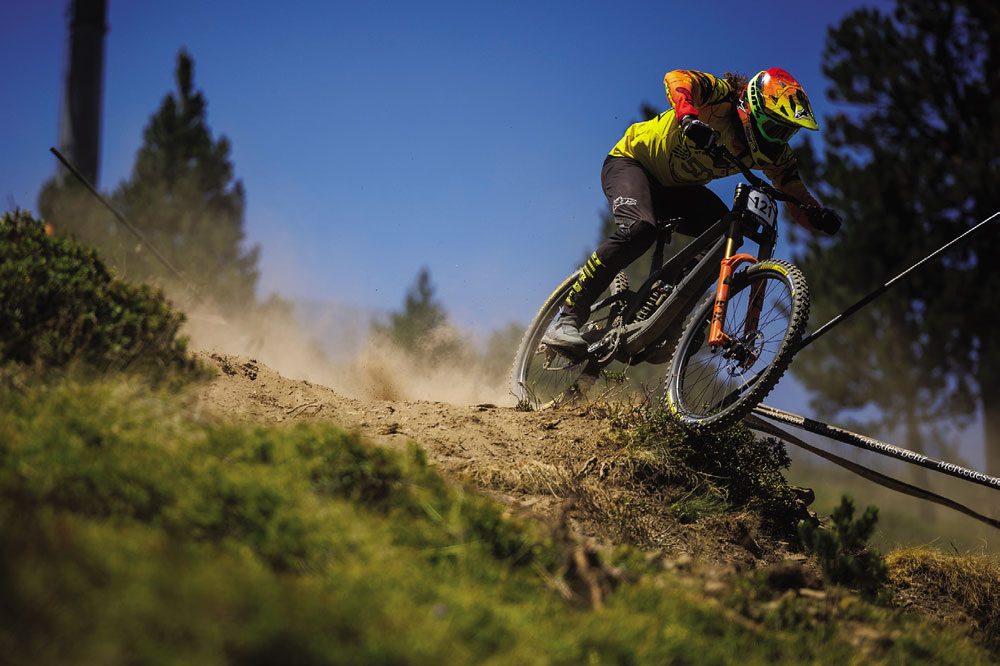
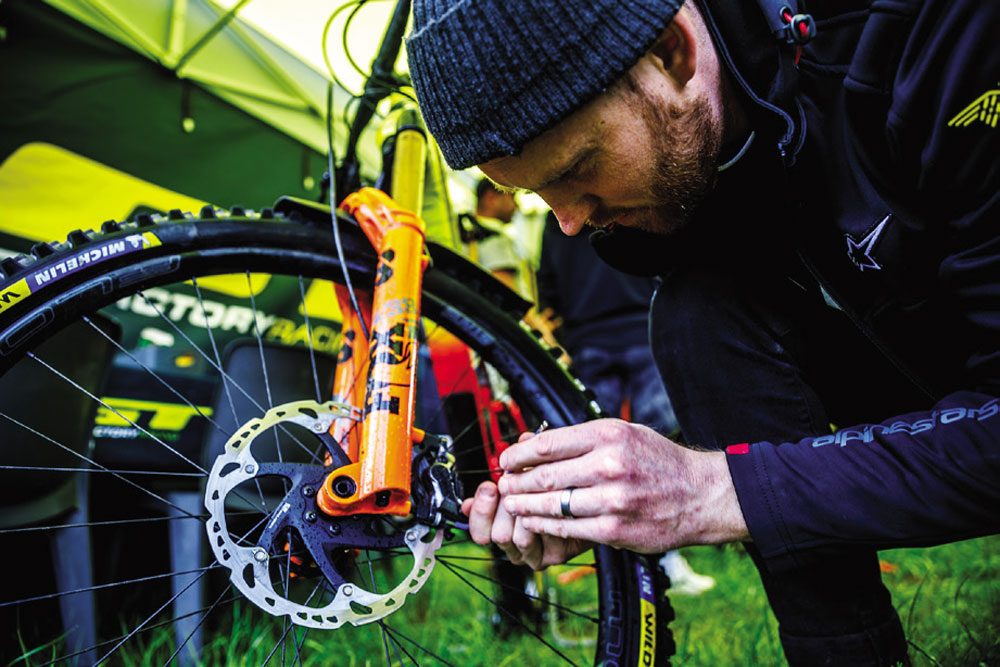
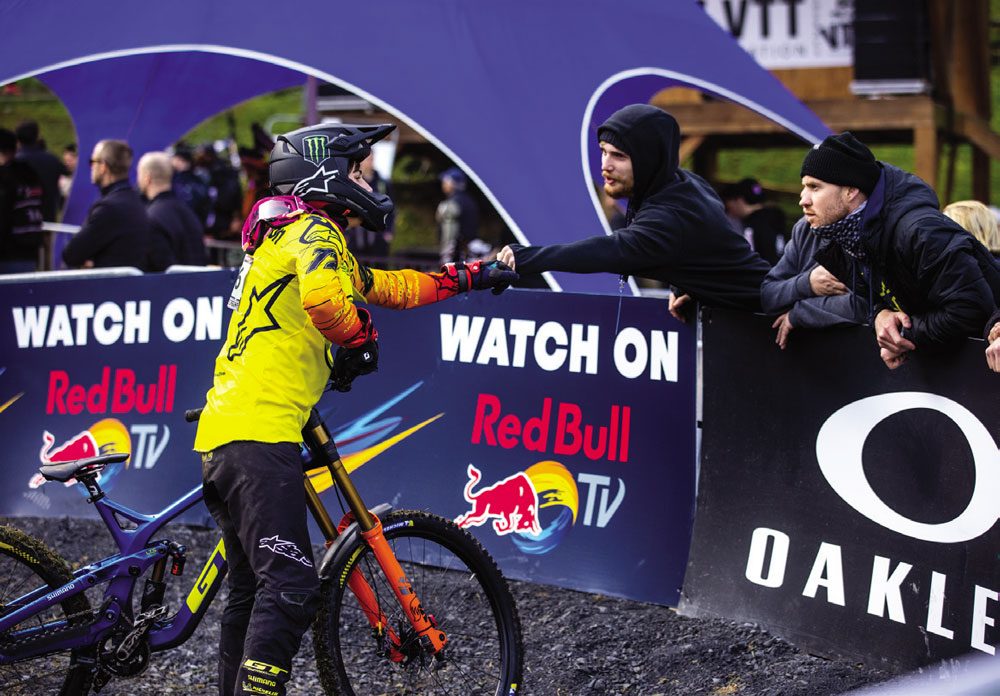
The Racing Season
Soon enough, the 2022 racing season was underway, and we were on the ground putting plans into action. We kicked things off in early March ’22 with a preseason block of training and racing in bitterly cold central southern France, before heading further south into Portugal in search of a little bit of sunshine to boost the mood prior to the unusually early start to the Downhill World Cup season, in Lourdes. At this point, we were still missing Jess Blewitt from the team, due to her delayed return to international racing after taking the entire New Zealand summer off to ensure full recovery from the injuries she sustained at the 2021 World Cup finals in Snowshoe. Nevertheless, we still had a strong group of riders in Ethan Craik, Ryan Pinkerton and, of course, none other than Wyn Masters. Although highlights of this first block of racing included all riders making the podium at a Portugal Cup downhill race, and sucking on juicy Portuguese oranges, the Lourdes World Cup was a reality check. This race showed us the brutal nature of World Cup Downhill racing both in terms of the course and quality of the athletes. For round two, in Fort William, we would have all of our riders on an updated version of GT’s downhill bike. This, along with a revised focus after Round 1 and having Jess back on board, was a huge boost for the team and paved the way for several substantial steps in a positive direction. Despite Jess picking up a small fracture in her collar bone, her pace was on target for a solid result and Ethan was riding on pace for a top 10 – 15 result until he unluckily misjudged a heavily degrading corner and fell victim to the wet and windy Scottish conditions on finals day. The Enduro World Series season kicked off on the first weekend of June, two weekends after the Fort William Downhill World Cup, so after a short breather I joined the Enduro team in Innerleithen, Scotland. Although we didn’t come away with the comfort of knowing our outright race pace matched that of our competitors, we did maintain a positive and ‘can do’ approach to picking up the pace up throughout the season. Sometimes, things just don’t go your way in racing, but the only way forward is to reflect on a situation and truthfully answer any questions that the facts present you with, in any situation you find yourself in. Having been a professional international racer myself, from 2006 – 2014, I understand the pressures and demands the riders and teams face. I have had many successes at the top level of the sport. Many of those have come after times of truthful self-reflection and facing the ‘no blame’ facts presented to me. These were often that I was not prepared to race at the highest level due to physical, mental or emotional shortcomings, or that I was just not executing my races in a free and relaxed state. This was true for the Enduro team. There was no flow happening both in and out of the events. Things were just not happening as easily as they should have been for the quality of the team we were on paper. The struggle continued into rounds 2 and 3 of the World Series, in Slovenia and Italy. Noga Korem looked like she was riding well on track, but was just not feeling completely confident at full race pace. Katy Winton was in a similar position, but was feeling like there was something deeper at play holding her back. After fighting through an entire season as a privateer in 2021, her efforts to get to this point in mid-2022 – and back on a factory team – were becoming too much to sustain the detail-oriented approach that is required to maintain the level of performance Katy and the team expected. So Katy bravely made the decision to suspend her racing season so that she could take some time to reflect and dig into what factors were holding her back. With the first major travel and racing blocks of 2022 under our belt at GT Factory Racing, we had forward momentum on our side regardless of the positive or negative nature of the situation. I personally find it better to at least know where you stand and from that point feel equipped with the facts so you can address the situation as it presents. After the Val di Fassa EWS round there was a week break before we faced nine races in nine weeks through July and August, across both the EWS and World Cup Downhill series. This included the Lenzerheide, Andorra, Snowshoe, Mont Sainte Anne and Val di Sole World Cups, and the North America triple of EWS races, as well as World Championships in Les Gets, France. Highlights from this intense string of racing included Jess’s first Elite Women’s World Cup DH podium in Andorra, which she promptly followed up two races later with another fourth place. Jess rounded out the season strongly by achieving another podium place finish at the World Cup finals in Val di Sole, on the most technically and physically demanding course of the year. Ethan, in his first year as an elite male, also achieved a career first when he placed seventh in his first elite Top 10 at the Mont Saint Anne World Cup, and was showing serious speed at the World Champs until a crash on the morning of race day slowed him down substantially. Finally, Ryan Pinkerton rode to a solid second place at the World Cup finals, topping off his first year in the junior ranks. But, if you think it was all champagne showers for the team, I should mention a challenging travel day from Washington Dulles airport after the Snowshoe World Cup, to Mont Sainte Anne for the following race. The day started early with two flights from Dulles to Quebec, via Toronto. When we arrived in Quebec we found the rental car company had cancelled our reservation and permanently shut its doors, but had decided they didn’t need to let us know about it. Since many of the World Cup Downhill and Cross Country teams were flying into Quebec City airport at that time, there was no chance of any rental stock being available that would allow us to move seven people around Quebec and Vermont for the following two weeks. In the end, we decided to fight that fight another day. After taking taxis to Mont Saint Anne, we sat at one of a few local restaurants and ordered dinner – which took forever to reach the table. After a late finish to the meal, we decided it was time to check into the two apartments I had booked for the week. The check in process ended around midnight with Mark breaking down a door to one of the apartments as the digital panel controlling the lock had failed. With that, you start to understand the mental approach and skillset that is required when being part of a team of 12 people who for five months of the year are constantly on the move and not always in the same place, let alone the same time zones. By mid-September, there were just the final two EWS races remaining in the 2022 international season for the team. For these last events we were still missing Katy, but through her time spent away from the races, reflecting, she was beginning to see the early steps required to return to racing at the top level. With the support of GTFR and her immediate support team, she was regaining the fire and energy it takes to ride a bike fast and to one’s potential. In terms of outright results, Noga finished the season very strongly by placing fourth at both the Crans Montana and Loudenvielle races, and was once again having fun at the races and on her bike. This was a relief for her and the team. Ultimately, I do this because I enjoy the process of learning and striving for performance but what really makes it so good is seeing the riders expand their personal horizons and have fun racing their bikes.
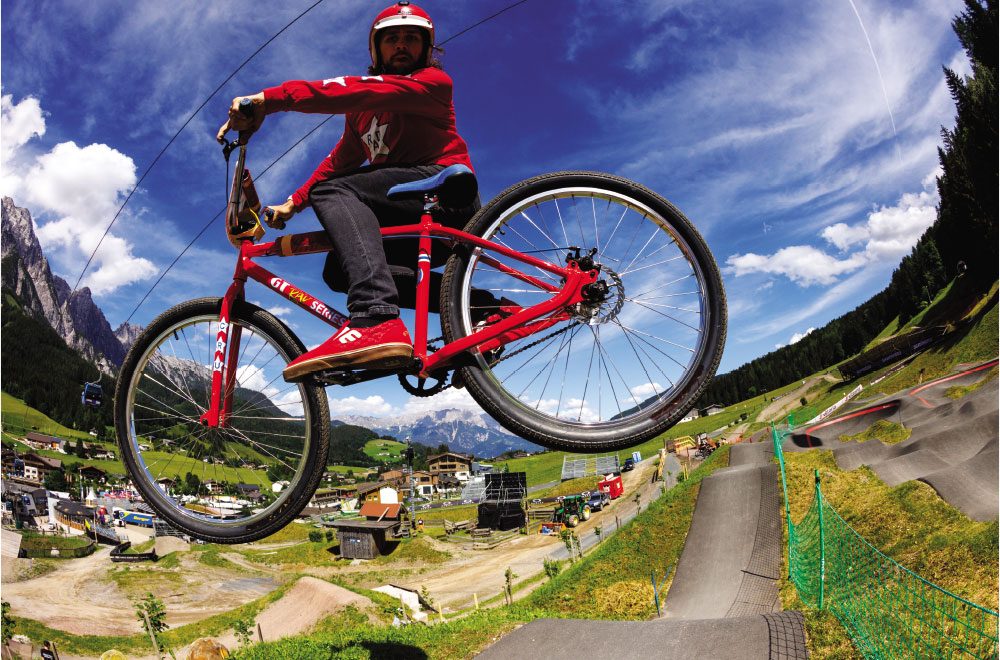
Reflections
Since the end of the season, after the final EWS race in Loudenvielle, we have had the chance to back off the gas, unwind and spend some time recovering physically and mentally. However, for those at the sharp end of this business, this time of the year is utilised as a chance to reflect on the past season while it is still fresh in the mind. While it is a good time of year to catch up on any night time reading that is missed during the season, it is also a chance to take notes and brainstorm new ways of doing things, that could be implemented in order to improve performance. Since the end of the 2022 season, we have already overcome some of the challenges that presented themselves over the year. But, we have many more ahead of us. For me, this is the lure of being part of a team competing in the highest level of competition, in any context. No matter what the result, there is always more to be improved on. Competing in an environment such as this forces teams through a process and journey of improvement. You don’t have a choice if you want to remain competitive in this game. Looking ahead to 2023, it’s going to be another busy year. Although there are still many months until the Downhill season kicks off, the first EWS races take place at the end of March, in Tasmania. So, for me, it’s swiftly back to the usual off-season duties.
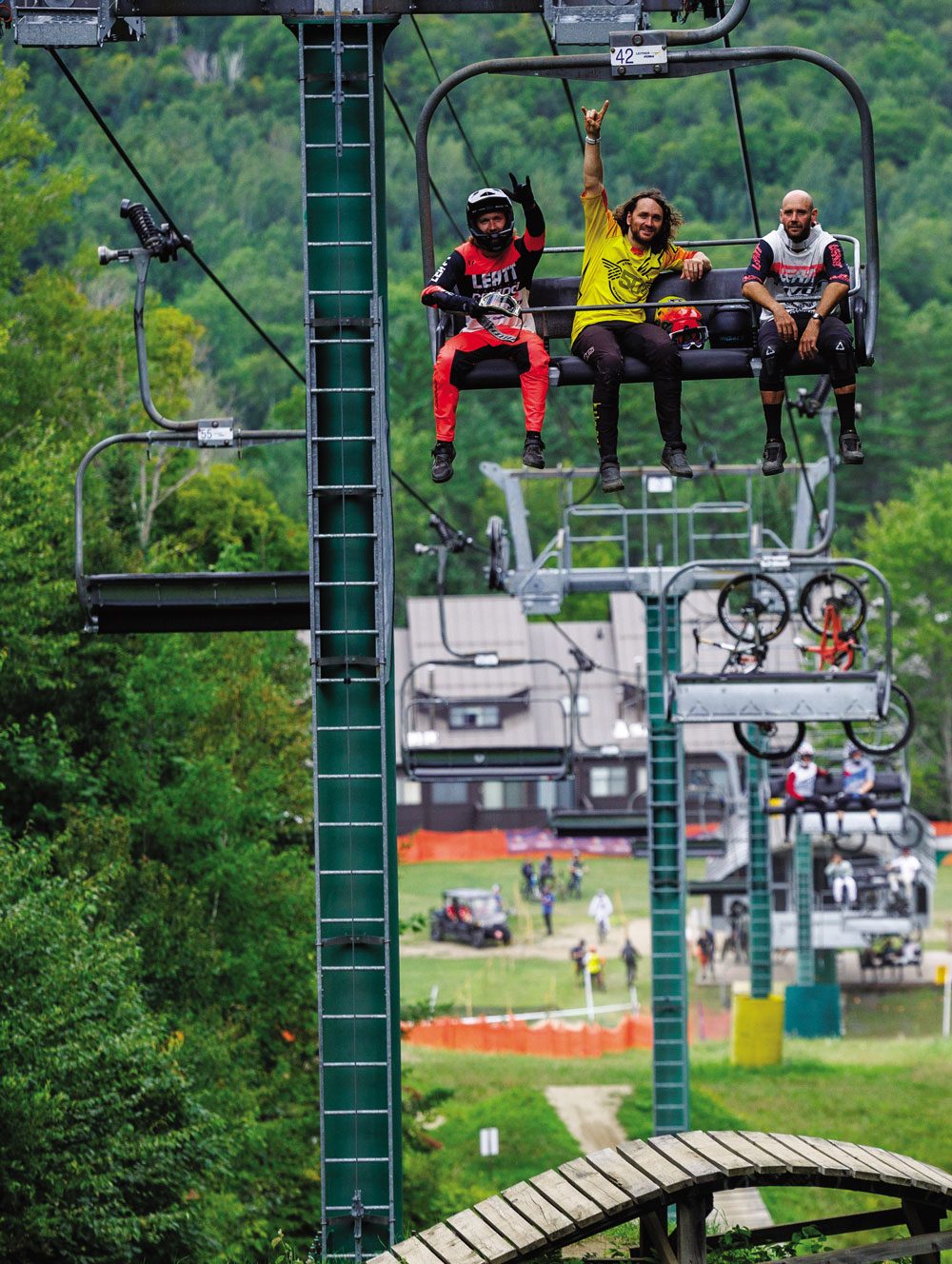
ENERGY IS WHAT YOU NEED FOR THIS PART OF THE JOB, ESPECIALLY SINCE WE ARE A RELATIVELY SMALL FACTORY TEAM AND ONE OF ONLY A FEW THAT COMPETE IN BOTH THE DOWNHILL WORLD CUP AND ENDURO WORLD SERIES (EWS).
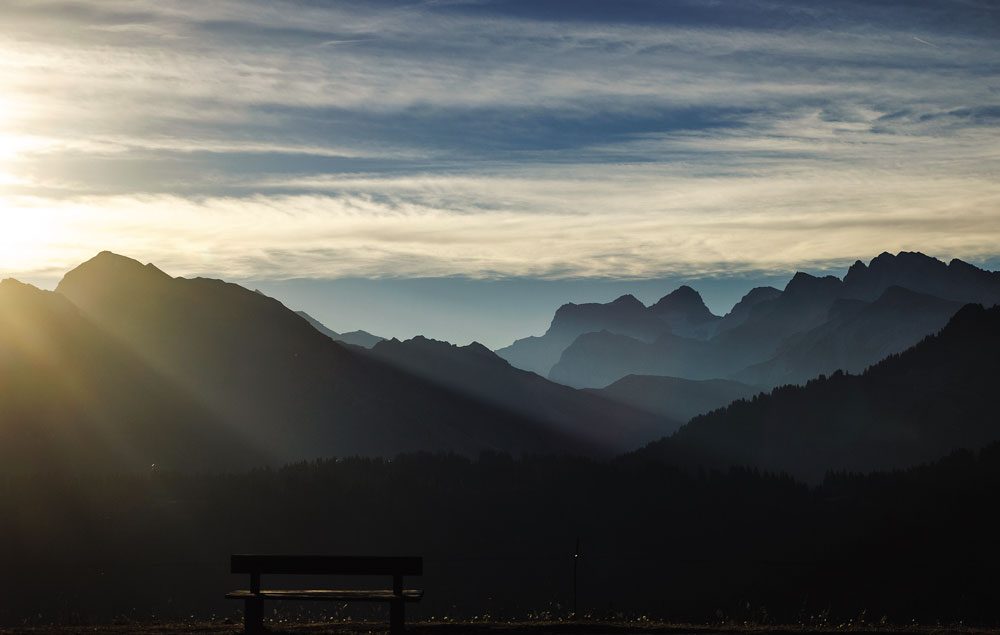
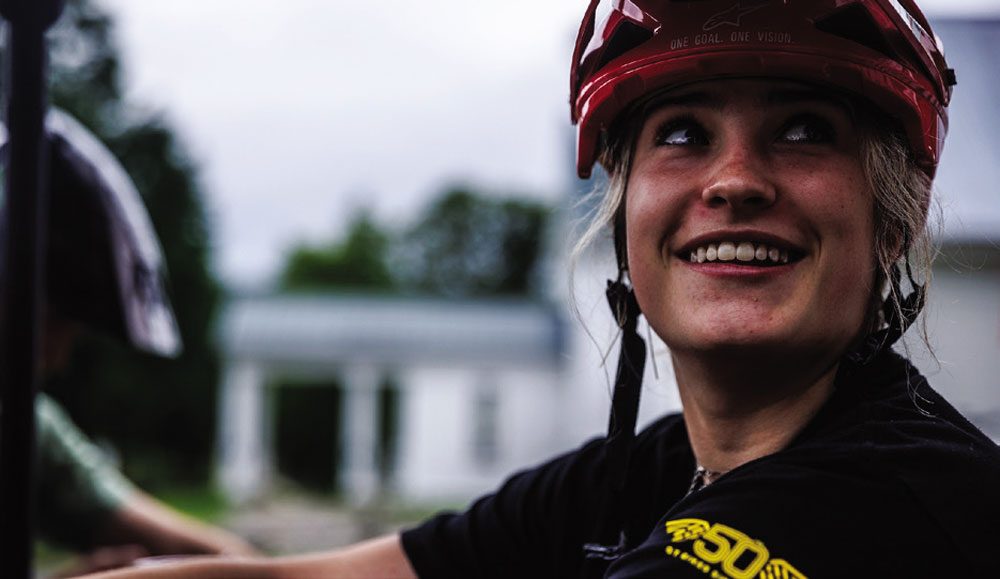
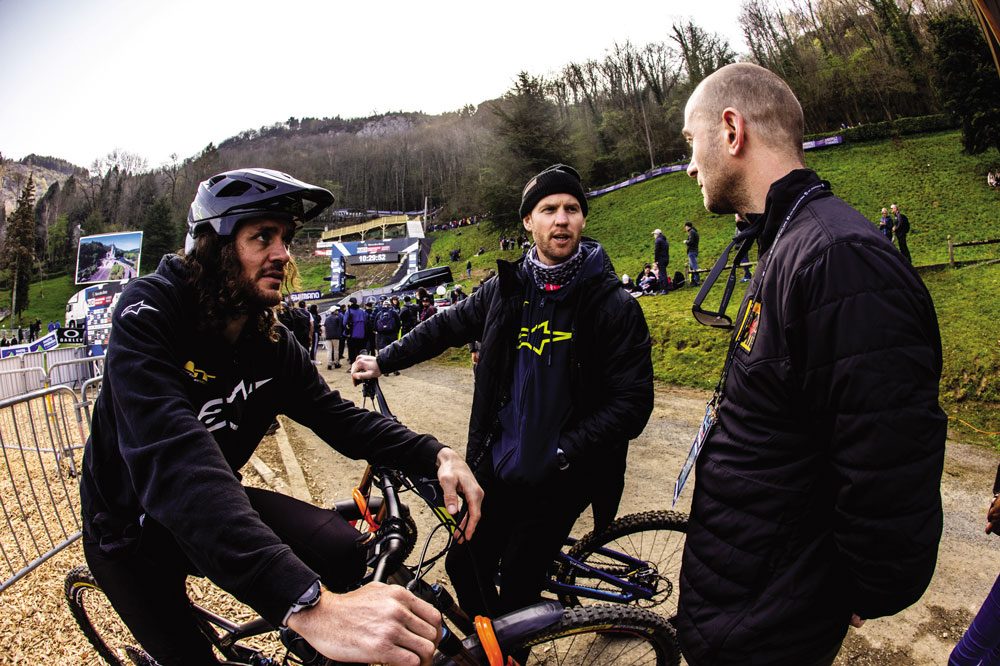
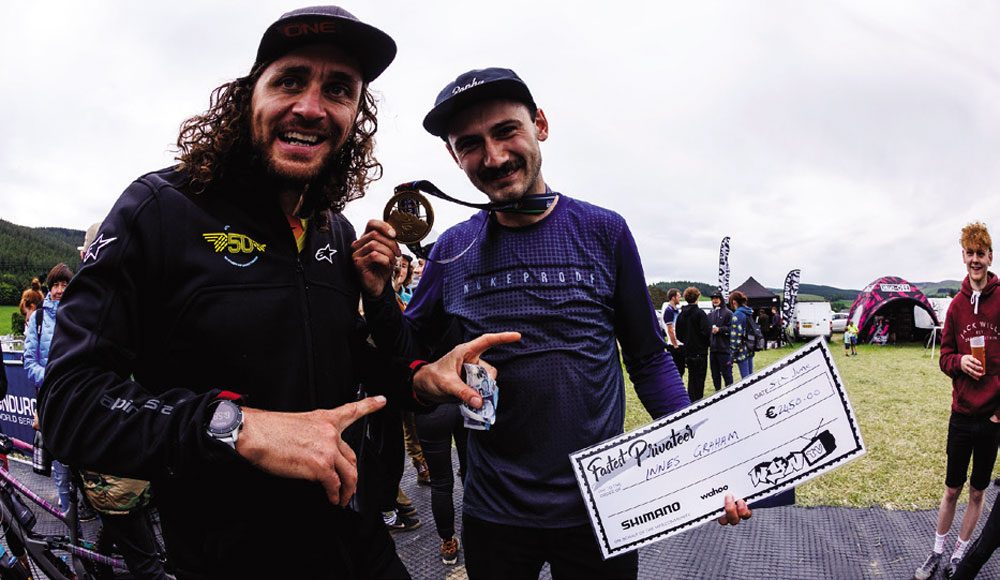
I PERSONALLY FIND IT BETTER TO AT LEAST KNOW WHERE YOU STAND AND FROM THAT POINT FEEL EQUIPPED WITH THE FACTS SO YOU CAN ADDRESS THE SITUATION AS IT PRESENTS.
